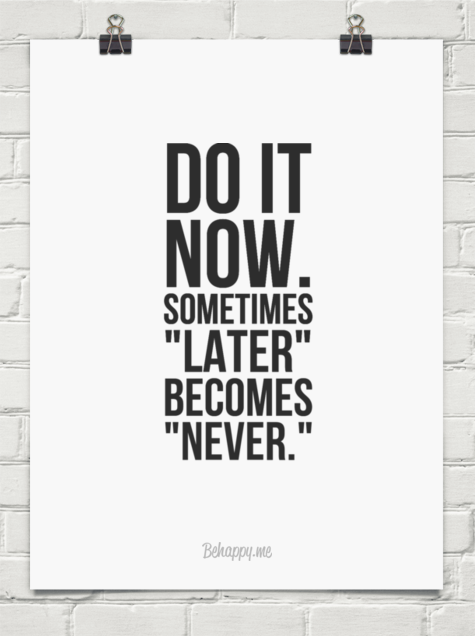
After one of the harshest winters, spring has finally arrived. The welcomed warmer temperatures and longer daylight hours infuse us with a sense of renewal and new beginnings. Low and behold we begin to come out of hibernation and start the mad dash to engage in positive lifestyle changes such as eating better, exercising, proper sleep and taking appropriate nutritional supplements. But invariably, life happens.
Yep, just when you were about to get started, it happens. YBS sets in. I see this “condition” all too often with clients attempting to enter or re-enter into any number of behavior changes. I will go so far as to say we all have been afflicted at one point or another in our lives. I call this condition Yeah But Syndrome, or “YBS”. It is often paralyzing and prevents those afflicted from moving into action, instead remaining in a state of inertia.
There are many symptoms of YBS but the following are some of the most common.
• Yeah I planned to go to the gym today BUT, the kids needed a ride to practice.
• Yeah I really want to eat better BUT I don’t have the time.
• Yeah I didn’t plan to eat the cake BUT my husband wanted too, so I did also.
• Yeah I really meant to go to the grocery shopping BUT I was too tired, so I hit the drive- thru.
• Or this is a good one. Yeah I meant to start today BUT, I’ll start tomorrow.
But tomorrow never comes. You get the drift. We can all come up with a million yeah buts, in other words, excuses. The good news is the treatment for YBS is simple--just do it! Take action. The reality of today’s 24-7 planet is there will always be something. The kids, work commitments, family obligations and various projects that need your attention will perpetually be present in some shape or form. The difference to make the difference is to learn to dance in the rain, not wait for the rain to pass. When will all the stars align so that your world will be “just right” to start? If not NOW, WHEN will you begin?
The key word here is begin. Far too frequently, I coach clients that shoot themselves in the foot before they start. Instead of consuming yourself with all the barriers to entry, select reasonable, low-hanging fruit that is “doable.” The art of lifestyle change is to avoid all-or-nothing thinking and begin to appreciate what you CAN do, versus focusing energy on what you can’t do. What is one action you can do TODAY to move toward your wellness goal(s)? Start to focus on what you can do in the mist of your existing life demands. This mantra is a friendly reminder: BE-DO-HAVE. Be committed. Do what it takes. And you will have results.
Lastly, if you think removing cereal from your morning routine it is too difficult and you can’t do it. Guess what-- you’re likely right. What you think is what you get! But what if you think instead, “I can do this. There are many truly healthy options for breakfast to replace cereal such as eggs and veggies that will help me look and feel my best.” Then guess what--you will! This simple change in mind-set can start a tidal wave of change and prevent you from abandoning ship when life tosses you into rough waters. Ongoing support is hugely important to sustain lifestyle changes.
Join the conversations in the
Cureality Forum to engage the support of health coaches and Cureality Members to stay on track.